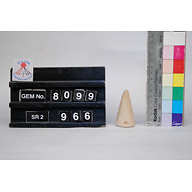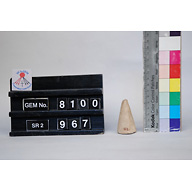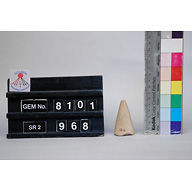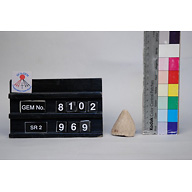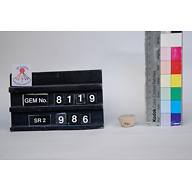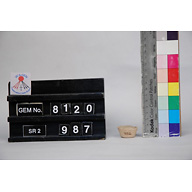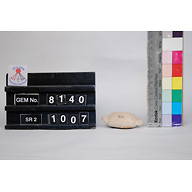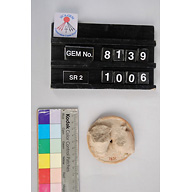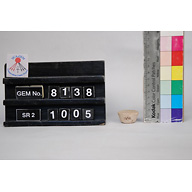Maps and plans: General Plan of Central Field
-
- Tomb Owner
- Rawer (G 8988)
-
- Attested
- Hetepheres (in G 8988)
- Hetepheres (in G 8988)
- Itisen (in G 8988)
- Khaib (in G 8988)
- Khentkaus (in G 8988)
- Meniu (in G 8988)
- Rawer (in G 8988)
- Shepseskafankh (in G 8988)
-
- Excavator
- Selim Hassan (Bey), Egyptian, 1886–1961
-
- Abou-Ghazi No (ASAE 58 [1964])
- 11
-
- Hassan No.
- Rawer (1)
- Re'-wer
-
- PorterMoss Date
- Neferirkare or a little later
-
- Baer Date
- Neferirkare - mid Dynasty 5
-
- Harpur Date
- Neferirkare
-
- Jacquet-Gordon Date
- Neferirkare
-
- Site Type
- Stone-built mastaba
-
- Shafts
- serdabs 1-25; niches 1-20; multiple passages; multiple chambers; multiple courts; multiple vestibules; S 1; S 2; S 16; S 20; S 21; S 28; S 29; S 30; S 31; S 37; S 38; S 39; S 40; S 41; S 42; S 43; S 45; S 46; S 47; S 48; S 52; S 53; S 54; S 58; S 62; S 63; S 64; S 65; S 66; S 68; S 69; S 70; S 72; S 73; S 74; S 77; S 78; S 79; S 82; S 83; S 84; S 85; S 87; S 88, S 94; S 111; S 112; S 113; S 114; S 120; S 125; S 130; S 131; S 132; S 133; S 135; S 136; S 137; S 142; S 146; S 147; S 157; S 158; S 159
-
- Remarks
- Mastaba complex built west of G 8972 (Mastaba of Shaft 35) and east of G 8993 (Kaemnefert Complex). Excavated in 1929-1930 by Hassan.
-
- EMC_JE_66626
-
- EMC_CG_1675
-
Block of limestone relief, with inscription of Rawer
- EMC_JE_66682
-
Fragment of head of limestone statue
- EMC_JE_66625
-
Fragment of limestone statue of Rawer(?)
- EMC_CG_318
-
- EMC_JE_86135
-
Fragments of alabaster statues of Rawer
- EMC_CG_1164
-
Fragments of limestone statues of Rawer
- EMC_CG_1162
-
- EMC_JE_72347
-
Gold and faience beads and spacers
- EMC_JE_72342
-
- EMC_JE_72341
-
- EMC_JE_72345
-
- EMC_JE_72348
-
Head of limestone statue of Rawer
- EMC_CG_287
-
Head of limestone statue of a man
- EMC_JE_72223
-
Headless seated statue of Rawer
- GEM_6854
-
Headless seated statue of Rawer
- EMC_CG_217
-
Headless seated statue of Rawer
- EMC_CG_197
-
Headless seated statue of Rawer
- EMC_CG_200
-
- EMC_JE_27492
-
- EMC_JE_72343
-
- GEM_8141
-
- GEM_8098
-
- GEM_8103
-
- GEM_8104
-
- GEM_8099
-
- GEM_8100
-
- GEM_8101
-
- GEM_8102
-
- GEM_8097
-
- GEM_8117
-
- GEM_8118
-
- GEM_8105
-
- GEM_8106
-
- GEM_8107
-
- GEM_8108
-
- GEM_8109
-
- GEM_8110
-
- GEM_8111
-
- GEM_8112
-
- GEM_8113
-
- GEM_8114
-
- GEM_8115
-
- GEM_8116
-
- GEM_8121
-
- GEM_8122
-
- GEM_8123
-
- GEM_8124
-
- GEM_8125
-
- GEM_8126
-
- GEM_8127
-
- GEM_8128
-
- GEM_8129
-
- GEM_8130
-
- GEM_8131
-
- GEM_8132
-
- GEM_8133
-
- GEM_8149
-
- GEM_8119
-
- GEM_8120
-
- GEM_8140
-
- GEM_8147
-
- GEM_8148
-
- GEM_10911
-
- GEM_10912
-
- GEM_10914
-
- GEM_8144
-
- GEM_8139
-
- GEM_8145
-
- GEM_8146
-
Limestone seated statue of Rawer
- EMC_CG_216
-
Limestone standing triad of a man
- EMC_JE_66616
-
- GEM_8143
-
- GEM_8142
-
- GEM_8134
-
- GEM_8135
-
- GEM_8136
-
- GEM_8137
-
- GEM_8138
-
- EMC_TR_8.5.43.8
-
- GEM_9736
-
- GEM_1104
-
- EMC_JE_66622
-
- WAM_1934.48
-
Three gold, faience, and carnelian anklets
- EMC_JE_72349
-
- GEM_6283
-
Baud, Michel. "The Tombs of Khamerernebty I and II at Giza." Göttinger Miszellen 164 (1998), pp. 7-8.
Chauvet, Violaine. “Decoration and Architecture: The Definition of Private Tomb Environment.” Servant of Mut. Studies on Ancient Egypt in Honor of Edward F. Wente. Leiden: Brill, 2008, pp. 46, 49, notes 22, 54.
Cooney, John. "A Tentative Identification of Three Old Kingdom Sculptures." Journal of Egyptian Archaeology 31 (1945), pp. 55-56.
Eaton-Krauss, Marianne. "The Striding Statue of Pehenptah (JE 44609)." In Mamdouh Eldmaty and Mai Trad, eds. Egyptian Museum Collections Around the World: Studies for the Centennial of the Egyptian Museum, Cairo. Cairo: Supreme Council of Antiquities, 2002, p. 306.
Eaton-Krauss, Marianne. "Pseudo-Groups." In Rainer Stadelmann and Hourig Sourouzian, eds. Kunst des Alten Reiches: Symposium im Deutschen Archäologischen Institut Kairo am 29. und 30. Oktober 1991. Sonderschrift des Deutschen Archäologischen Institut Abteilung Kairo 28, Mainz am Rhein: Verlag Philipp von Zabern, 1995, pp. 60-61, 72 [22].
Hassan, Selim. Excavations at Gîza 1: 1929-1930. Oxford & Cairo: Faculty of Arts of the Egyptian University & Oxford University Press, 1932, pp. 1-61, figs. 1-43, 48-57, 61-69, 73, 75-84, 91-96, 99-103, 110-112, pls. 1-41, 77.2, 77.3, 78, 79.1-3, 80c, plan on Frontispiece.
Hassan, Selim. Excavations at Gîza 9: 1936-37-38. The Mastabas of the Eighth Season and their Description. Cairo: General Organisation for Government Printing Offices, 1960, folded plan, T/U-8/11.
Jánosi, Peter. "The Tombs of Officials. Houses of Eternity." In Egyptian Art in the Age of the Pyramids. New York: The Metropolitan Museum of Art, 1999, pp. 37, 39, notes 20, 63.
Junker, Hermann. Gîza 3. Die Mastabas der vorgeschrittenen V. Dynastie auf dem Westfriedhof. Akademie der Wissenschaften in Wien Philosophisch-historische Klasse Denkschriften. Vienna & Leipzig: Hölder-Pichler-Tempsky, 1938, p. 52 [51], 62.
Lehmann, Katja. Der Serdab in den Privatgräbern des Alten Reiches 1-3. Ph.D. Dissertation, Universität Heidelberg, 2000, Kat. G370.
Manuelian, Peter Der. "Penmeru Revisited–Giza Mastaba G 2197 (Giza Archives Gleanings V)." Journal of the American Research Center in Egypt 45 (2009), p. 38, note 61.
Manuelian, Peter Der. "Excavating the Old Kingdom. The Giza Necropolis and Other Mastaba Fields." In Egyptian Art in the Age of the Pyramids. New York: The Metropolitan Museum of Art, 1999, p. 149.
Mysliwiec, Karol. "The Scheme 2 x 4 in the Decoration of Old Kingdom Tombs." In Zahi Hawass and Janet Richards, eds. The Archaeology and Art of Ancient Egypt. Essays in Honor of David B. O'Connor, Vol. II. Annales du Service des Antiquités de l'Égypte, Cahier no. 36. Cairo: Supreme Council of Antiquities, 2007, p. 203, note 11.
"Notes and News." Journal of Egyptian Archaeology 16 (1930), p. 144.
Porter, Bertha, and Rosalind L.B. Moss. Topographical Bibliography of Ancient Egyptian Hieroglyphic Texts, Reliefs, and Paintings 3: Memphis (Abû Rawâsh to Dahshûr). Oxford: The Clarendon Press, 1931. 2nd edition. 3: Memphis, Part 1 (Abû Rawâsh to Abûsîr), revised and augmented by Jaromír Málek. Oxford: The Clarendon Press, 1974, pp. 265-269, plans 23, C/D-8/9, 33.
Sethe, Kurt. Urkunden des Alten Reichs. Erster Band. Urkunden des Ägyptischen Altertums Abteilung 1, Hft. 1-4. Leipzig: J.C. Hinrichs'sche Buchhandlung, 1903/1933, pp. 232-234 [7 (147)-8 (148)].
Smith, William Stevenson. "The Old Kingdom in Egypt," The Cambridge Ancient History, rev. ed. of vols. I & II, Cambridge University Press, 1962, p. 42.
Ancient People
-
- Type Attested
- Remarks Daughter ([sAt=f] his daughter) of Rawer (owner of G 8988). Appears in family group statue of Rawer.
-
- Type Attested
- Remarks Wife of Itisen and mother ([mwt=f] his mother) of Rawer (owner of G 8988). Appears in family group statue of Rawer and in tomb relief (eastern wall of vestibule) standing before her son, identified in both places as [rxt nswt] royal acquaintance; in situ in G 8988. Also probable owner of broken standing statue (WAM_1934.48); possibly from G 8988.
-
- Type Attested
- Remarks Husband of Hetepheres and father ([jt=f] his father) of Rawer (owner of G 8988). Appears in family group statue of Rawer, identified as [rx nswt] royal acquaintance.
-
- Type Attested
- Remarks Appears (fragment of east wall of lower court, lower register) offering foreleg of beef, identified as [sHD Hmw-kA] inspector of ka-priests.
-
- Type Attested
- Remarks Appears on eastern wall of vestibule of G 8988. Any relation to tomb owner Rawer is unspecified.
-
- Type Attested
- Remarks Appears (only leg preserved, fragment of east wall of lower court, upper register), identified as [xtmw] sealer.
-
- Type Tomb Owner
- Remarks Owner of G 8988. Son of Itisen and Hetepheres. Entrance architrave, lintel and facade inscribed for Rawer, identified as [smr watj Hrj-tp nxb Hm-nTr Hr-jnpw xntj pr Smswt watj aD-mr Hr sbA xntj pt sm xrp SnDt xt mnw xrp aH Hrj-sStA n pr(-dwAt) Xrj-Hb wa m wrw Hb xrp Hwwt nt mw aD-mr dp Hm-nTr wADt jrj nfr-HAt] sole companion, chief of Nekheb, priest of Horus-Anubis who presides solely over the suite, administrator of the district 'Star-of-Horus-Foremost-of-Heaven', sem-priest, director of the kilt, khet-priest of Min, director of the palace, secretary of the House (of Morning), lector-priest, sole one of the great ones of the festival, director of mansions of mu-textiles(?), administrator of Dep, priest of Wadjet, keeper of the diadem; facade in situ, lintel and architrave fallen in front of entrance to G 8988. Inner door jambs inscribed for Rawer, identified as [jmj-r Xkrw nswt n jswj overseer of the king's ornaments in the two chambers; in situ in G 8988. Inscription along top of eastern wall of serdab 14 with titles [Hm-nTr nxbt Hm-ntr wADt smr watj n(j) mrwt] priest of Nekhbet, priest of Wadjet, sole companion, possessor of love; in situ in G 8988. Rawer appears on alabaster panel (JE 66626) in niche 14, identified as [Hrj-sStA n mdw-nTr] secretary of the sacred writings; in situ in G 8988. Inscribed limestone slab with title [Hm-nTr wADt p dp] priest of Wadjet in Pe and Dep; found displaced in G 8988. Inscribed limestone slab with title [jmj-r wabt] overseer of the wabet; found fallen from wall of first chamber of eastern passage in G 8988. Life-size limestone statue of Rawer, inscribed [jrj nfr-HAt (smsw?) wxrt aAt jr Sn nswt] keeper of the diadem, (elder?) of the great shipyard, royal hairdresser; found in back of second chamber of eastern passage in G 8988. Life-size limestone statue of Rawer, inscribed [jmj-jb n nb=f Hrj-sStA n nswt] he who is in the heart of his lord, secretary of the king; found in situ in serdab 12 of G 8988, along with limestone relief of biographical inscription (JE 66682). A large number of other inscribed statues and fragments of Rawer and his family found throughout G 8988 (including JE 66615, a quartzite "pseudo-group" statue of Rawer, and JE 66625, a limestone statue head of Rawer).
-
- Type Attested
- Remarks Son ([sA=f] his son]) of Rawer (owner of G 8988). Appears in family group statue of Rawer, identified as [rx nswt] royal acquaintance.
-
- Type Attested
- Remarks Appears (fragment of east wall of lower court, upper register) censing, identified as [sHD Hmw-kA] inspector of ka-priests.
Modern People
-
- Type Excavator
- Nationality & Dates Egyptian, 1886–1961
- Remarks Egyptologist; Sub Director General. Nationality and life dates from Who was Who in Egyptology. (1886-1961) Egyptian Egyptologist; born Mit-Nagi, 15 April 1886, he studied at the Higher Teacher's College, Cairo under Kamal (q.v.); in 1912 he became a teacher and in 1921 obtained a post in the Egyptian Museum as assistant keeper; he studied in Paris 1923-7 at the Ecole Pratique des Hautes Etudes; he was the first Egyptian to be appointed as a Professor of Egyptology in the Universitv of Cairo, 1928 - 36; he was later made Deputy Director of the Egyptian Antiquities Service responsible for the care of all monuments in the Nile valley, 1936-39; Ph.D. Vienna University, 1935; stimulated by the archaeological work of P. E. Newberry (q.v.) and Junker (q.v.)he began an active career in excavations with the clearance of some of the Giza mastabas in 1929; the excavations carried on by him in this necropolis continued until 1939 by which time a great deal of digging had been achieved, published in 10 parts; he also cleared the Sphinx and its temple, for the first time completely digging out the great amphitheatre around it and ensuring that it would not be buried by send again so easily; he wrote a study on this work and on the temple of Amenhotep II here; in addition the so-called Fourth Pyramid or the palace-façade tomb of Queen Khent-kawes of the Fourth Dynasty was investigated and also the funerary town of the priests associated with it; he later worked on the Unas causeway at Saqqara and at the valley temple of this king, discovering some of the mastabas in this area and two great subterranean tombs dated to the Second Dynasty; his final excavations at Giza were carried out on the east and south faces of the Great Pyramid and at the mortuary temple of King Khufu, 1938-9; he also took part in the campaign to save the monments of Nubia, and wrote a report on this subject; he published about 53 books and articles on Egyptological subjects in English, French, and Arabic, Hymnes religieux du Moyen Empire, 1928; Le Poème dit de Pentaour et Le rapport officiel sur la bataiILe de Qadesh , 1929; Excavations at Giza, 10 pts., 1929-60; The Sphinx. Its History in the Light of recent Excavations, 1949; Report on the Monunents of Nubia,1955Excavations at Saqqara 1937-8, 3 vols., 1975; in Arabic Literature of Ancient Egpt, 2 vols.; Ancient Egypt from Prehistoric Times to the Age of Rameses 11, 6 vols.; he died in Giza, 30 Sept. 1961. AfO 20 (1963), 310 (H. Brunner); Archaeology 14, no, 4 (1961, 293; ASAE 58 (1964), 61- 84 (bibl.) (Dia Abou-Ghazi); Orientalia 31 (1962), 271; Goettinger Miszellen 76 (1984), 78-80; Reid, JAOS 105 (1985), 237, 241-44.
Name of this image
Description of the image duis mollis, est non commodo luctus, nisi erat porttitor ligula, eget lacinia odio sem nec elit. Sed posuere consectetur est at lobortis. Donec sed odio dui.

- Heather ONeill heather@pixelsforhumans.com
- Nicholas Picardo npicardo@fas.harvard.edu
- Luke Hollis luke@archimedes.digital
Hi ! (not you? Login to your account.)
- Cole Test Collection - Tomb Chapels and Shafts
- GPH Test Collection 1
- Mr.
- Mr.
- Mr.
- ZAP
- ZAP
- Mr.
- Mr.
- Mr.
- Mr.
- Mr.
- Mr.
- Mr.
- Mr.
- Mr.
- Mr.
- Mr.
- Mr.
- Mr.
- Mr.
- Mr.
- Mr.
- Mr.
- Mr.
- Mr.
- Mr.
- Mr.
- Mr.
- Mr.
- Mr.
- Mr.
- Mr.
- Mr.
- Mr.
- Mr.
- Mr.
- Mr.
- Mr.
- Mr.
- Mr.
- Mr.
- Mr.
- Mr.
- Ankhmare
- ZAP
- ZAP
- ZAP
- Hello World
- http://www.pypi.org/
- Hello World
- //pypi.org
- Hello World
- Hello World
- 1'2"3
- a'b"c'd"
- Hello World
- Hello World
- Hello World
- Hello World
- Hello World
- Hello World
- Hello World
- Hello World
- Hello World
- Hello World
- Hello World
- Hello World
- Hello World
- Hello World
- Hello World
- Hello World
- Hello World
- Hello World
- Hello World
- Hello World
- Hello World
- Hello World
- Hello World
- Hello World
- Hello World
- Hello World
- Hello World
- Hello World
- Hello World
- Hello World
- Hello World
- Hello World
- /..//..//..//..//..//..//..//..//..//..//..//..//..//..//../etc/passwd
- Hello World
- Hello World
- ../../../../../../../../../../../../../../../etc/passwd
- Hello World
- file:///etc/passwd
- /etc/passwd
- /..//..//..//..//..//..//..//..//..//..//..//..//..//..//../boot.ini
- ../../../../../../../../../../../../../../../boot.ini
- Hello World
- C:\boot.ini
- file:///C:/boot.ini
- file:///C:/win.ini
- Hello World
- Hello World
- Hello World
- Hello World
- Hello World
- %SYSTEMROOT%\win.ini
- Hello World
- Hello World
- Hello World
- Hello World
- Hello World
- Hello World
- Hello World
- Hello World
- /bin/cat /etc/passwd
- type %SYSTEMROOT%\win.ini
- &&/bin/cat /etc/passwd
- &&type %SYSTEMROOT%\win.ini
- |/bin/cat /etc/passwd
- /bin/cat /etc/passwd
- |type %SYSTEMROOT%\win.ini
- ;/bin/cat /etc/passwd
- ;type %SYSTEMROOT%\win.ini
- Hello World
- `/bin/cat /etc/passwd`
- Hello World
- Hello World
- Hello World
- /bin/cat /etc/passwd
- type %SYSTEMROOT%\win.ini
- Hello World
- Hello World
- Hello World
- Hello World
- Hello World
- Hello World
- Hello World
- Hello World
- Hello World
- Hello World
- Hello Worldtype %SYSTEMROOT%\win.ini
- Hello World&&type %SYSTEMROOT%\win.ini
- type %SYSTEMROOT%\win.ini
- Hello World&&/bin/cat /etc/passwd
- run type %SYSTEMROOT%\win.ini
- Hello World/bin/cat /etc/passwd
- Hello World|/bin/cat /etc/passwd
- Hello World|type %SYSTEMROOT%\win.ini
- Hello World;/bin/cat /etc/passwd
- Hello World type %SYSTEMROOT%\win.ini
- Hello Worldrun type %SYSTEMROOT%\win.ini
- Hello World /bin/cat /etc/passwd
- Hello World`/bin/cat /etc/passwd`
- Hello World type %SYSTEMROOT%\win.ini
- Hello World /bin/cat /etc/passwd
- Hello World;type %SYSTEMROOT%\win.ini
- Mr.
- Hello World
- Hello World
- a'b"c'd"
- 1'2"3
- Hello World
- http://www.pypi.org/
- Hello World
- //pypi.org
- Hello World
- Hello World
- Hello World
- Hello World
- Hello World
- Hello World
- Hello World
- Hello World
- Hello World
- Hello World
- Hello World
- Hello World
- Hello World
- Hello World
- Hello World
- Hello World
- Hello World
- Hello World
- Hello World
- Hello World
- Hello World
- Hello World
- Hello World
- Hello World
- Hello World
- Hello World
- Hello World
- Hello World
- Hello World
- Hello World
- Hello World
- Hello World
- Hello World
- Hello World
- Hello World
- ../../../../../../../../../../../../../../../etc/passwd
- /..//..//..//..//..//..//..//..//..//..//..//..//..//..//../etc/passwd
- /etc/passwd
- /..//..//..//..//..//..//..//..//..//..//..//..//..//..//../boot.ini
- ../../../../../../../../../../../../../../../boot.ini
- file:///etc/passwd
- C:\boot.ini
- file:///C:/win.ini
- %SYSTEMROOT%\win.ini
- file:///C:/boot.ini
- Hello World
- Hello World
- Hello World
- Hello World
- Hello World
- Hello World
- Hello World
- Hello World
- Hello World
- Hello World
- Hello World
- Hello World
- Hello World
- /bin/cat /etc/passwd
- Hello World
- &&/bin/cat /etc/passwd
- &&type %SYSTEMROOT%\win.ini
- |type %SYSTEMROOT%\win.ini
- |/bin/cat /etc/passwd
- type %SYSTEMROOT%\win.ini
- ;type %SYSTEMROOT%\win.ini
- type %SYSTEMROOT%\win.ini
- /bin/cat /etc/passwd
- /bin/cat /etc/passwd
- ;/bin/cat /etc/passwd
- type %SYSTEMROOT%\win.ini
- `/bin/cat /etc/passwd`
- run type %SYSTEMROOT%\win.ini
- Hello World
- Hello World
- Hello World
- Hello World
- Hello World
- Hello World
- Hello World
- Hello World
- Hello World
- Hello World
- Hello World
- Hello World
- Hello World
- Hello World
- Hello World/bin/cat /etc/passwd
- Hello Worldtype %SYSTEMROOT%\win.ini
- Hello World&&/bin/cat /etc/passwd
- Hello World&&type %SYSTEMROOT%\win.ini
- Hello World|/bin/cat /etc/passwd
- Hello World|type %SYSTEMROOT%\win.ini
- Hello World;/bin/cat /etc/passwd
- Hello World;type %SYSTEMROOT%\win.ini
- Hello World /bin/cat /etc/passwd
- Hello World /bin/cat /etc/passwd
- Hello World type %SYSTEMROOT%\win.ini
- Hello World type %SYSTEMROOT%\win.ini
- Hello World`/bin/cat /etc/passwd`
- Hello Worldrun type %SYSTEMROOT%\win.ini
- Hello World /bin/cat /etc/passwd
- Hello World type %SYSTEMROOT%\win.ini
- Hello World`/bin/cat /etc/passwd`
- Hello Worldrun type %SYSTEMROOT%\win.ini
- Hello World type %SYSTEMROOT%\win.ini
- Hello World
- 1'2"3
- Hello World
- a'b"c'd"
- Hello World
- Hello World
- //pypi.org
- http://www.pypi.org/
- Hello World
- Hello World
- Hello World
- Hello World
- Hello World
- Hello World
- Hello World
- Hello World
- Hello World
- Hello World
- Hello World
- Hello World
- Hello World
- Hello World
- Hello World
- Hello World
- Hello World
- Hello World
- Hello World
- Hello World
- Hello World
- Hello World
- Hello World
- Hello World
- Hello World
- Hello World
- Hello World
- Hello World
- Hello World
- Hello World
- Hello World
- Hello World
- Hello World
- Hello World
- Hello World
- Hello World
- Hello World
- Hello World
- Hello World
- /..//..//..//..//..//..//..//..//..//..//..//..//..//..//../etc/passwd
- ../../../../../../../../../../../../../../../etc/passwd
- /etc/passwd
- ../../../../../../../../../../../../../../../boot.ini
- /..//..//..//..//..//..//..//..//..//..//..//..//..//..//../boot.ini
- file:///etc/passwd
- C:\boot.ini
- %SYSTEMROOT%\win.ini
- file:///C:/boot.ini
- file:///C:/win.ini
- Hello World
- Hello World
- Hello World
- Hello World
- Hello World
- Hello World
- Hello World
- Hello World
- Hello World
- Hello World
- Hello World
- /bin/cat /etc/passwd
- Hello World
- Hello World
- Hello World
- type %SYSTEMROOT%\win.ini
- &&/bin/cat /etc/passwd
- ;/bin/cat /etc/passwd
- &&type %SYSTEMROOT%\win.ini
- type %SYSTEMROOT%\win.ini
- |type %SYSTEMROOT%\win.ini
- /bin/cat /etc/passwd
- ;type %SYSTEMROOT%\win.ini
- /bin/cat /etc/passwd
- |/bin/cat /etc/passwd
- Hello World
- Hello World
- Hello World
- Hello World
- Hello World
- type %SYSTEMROOT%\win.ini
- Hello World
- `/bin/cat /etc/passwd`
- Hello World
- Hello World
- run type %SYSTEMROOT%\win.ini
- Hello World
- Hello World
- Hello World
- Hello World
- Hello World
- Hello World|/bin/cat /etc/passwd
- Hello World
- Hello World&&type %SYSTEMROOT%\win.ini
- Hello World|type %SYSTEMROOT%\win.ini
- Hello Worldtype %SYSTEMROOT%\win.ini
- Hello World&&/bin/cat /etc/passwd
- Hello World/bin/cat /etc/passwd
- Hello World;/bin/cat /etc/passwd
- Hello World /bin/cat /etc/passwd
- Hello World;type %SYSTEMROOT%\win.ini
- Hello World /bin/cat /etc/passwd
- Hello World type %SYSTEMROOT%\win.ini
- Hello World type %SYSTEMROOT%\win.ini
- Hello World`/bin/cat /etc/passwd`
- Hello Worldrun type %SYSTEMROOT%\win.ini
- Hello World
- 1'2"3
- Hello World
- a'b"c'd"
- http://www.pypi.org/
- Hello World
- //pypi.org
- Hello World
- Hello World
- Hello World
- Hello World
- Hello World
- Hello World
- Hello World
- Hello World
- Hello World
- Hello World
- Hello World
- Hello World
- Hello World
- Hello World
- Hello World
- Hello World
- Hello World
- Hello World
- Hello World
- Hello World
- Hello World
- Hello World
- Hello World
- Hello World
- Hello World
- Hello World
- Hello World
- Hello World
- Hello World
- Hello World
- Hello World
- Hello World
- Hello World
- Hello World
- Hello World
- Hello World
- Hello World
- Hello World
- Hello World
- Hello World
- Hello World
- /..//..//..//..//..//..//..//..//..//..//..//..//..//..//../etc/passwd
- ../../../../../../../../../../../../../../../etc/passwd
- /etc/passwd
- file:///etc/passwd
- /..//..//..//..//..//..//..//..//..//..//..//..//..//..//../boot.ini
- ../../../../../../../../../../../../../../../boot.ini
- %SYSTEMROOT%\win.ini
- C:\boot.ini
- file:///C:/boot.ini
- Hello World
- file:///C:/win.ini
- Hello World
- Hello World
- Hello World
- Hello World
- Hello World
- Hello World
- Hello World
- Hello World
- Hello World
- Hello World
- type %SYSTEMROOT%\win.ini
- &&/bin/cat /etc/passwd
- Hello World
- Hello World
- /bin/cat /etc/passwd
- Hello World
- &&type %SYSTEMROOT%\win.ini
- |/bin/cat /etc/passwd
- |type %SYSTEMROOT%\win.ini
- ;/bin/cat /etc/passwd
- ;type %SYSTEMROOT%\win.ini
- Hello World
- type %SYSTEMROOT%\win.ini
- Hello World
- /bin/cat /etc/passwd
- `/bin/cat /etc/passwd`
- type %SYSTEMROOT%\win.ini
- /bin/cat /etc/passwd
- run type %SYSTEMROOT%\win.ini
- Hello World
- Hello World
- Hello World
- Hello World
- Hello World
- Hello World
- Hello World
- Hello World
- Hello World
- Hello World
- Hello World/bin/cat /etc/passwd
- Hello World
- Hello Worldtype %SYSTEMROOT%\win.ini
- Hello World;type %SYSTEMROOT%\win.ini
- Hello World;/bin/cat /etc/passwd
- Hello World&&type %SYSTEMROOT%\win.ini
- Hello World|/bin/cat /etc/passwd
- Hello World&&/bin/cat /etc/passwd
- Hello World /bin/cat /etc/passwd
- Hello World
- Hello World type %SYSTEMROOT%\win.ini
- Hello World|type %SYSTEMROOT%\win.ini
- Hello World`/bin/cat /etc/passwd`
- Hello World /bin/cat /etc/passwd
- Hello World type %SYSTEMROOT%\win.ini
- Hello Worldrun type %SYSTEMROOT%\win.ini
- Hello Worldrun type %SYSTEMROOT%\win.ini
- Mr.
- Mr.
- Mr.
- Mr.
- Mr.
- Mr.
- Mr.
- Mr.
- Mr.
- Mr.
- Mr.
- Mr.
- Mr.
- Mr.
- Mr.
- Mr.
- Mr.
- Mr.
- Mr.
- Mr.
- Mr.
- Mr.
- Mr.
- Mr.
- Mr.
- Mr.
- Mr.
- Mr.
- Mr.
- Mr.
- Mr.
- )
- HttP://bxss.me/t/xss.html?%00
- Mr.
- Mr.
- Mr.
- !(()&&!|*|*|
- bxss.me/t/xss.html?%00
- Mr.
- Mr.
- ^(#$!@#$)(()))******
- Mr.
- Mr.
- Mr.
- Mr.
- Mr.
- Mr.
- Mr.
- Mr.
- Mr.
- Mr.
- ;assert(base64_decode('cHJpbnQobWQ1KDMxMzM3KSk7'));
- )))))))))))))))))))))))))))))))))))))))))))))))))))))))))))))))))))))
- Mr.
- Mr.
- Mr.
- ';print(md5(31337));$a='
- Mr.
- Mr.
- Mr.
- Mr.<esi:include src="http://bxss.me/rpb.png"/>
- ";print(md5(31337));$a="
- Mr.
- Mr.
- Mr.
- Mr.
- Mr.
- ${@print(md5(31337))}
- Mr.
- Mr.
- Mr.
- Mr.
- Mr.
- ${@print(md5(31337))}\
- Mr.
- Mr.
- Mr.
- Mr.
- '.print(md5(31337)).'
- Mr.
- Mr.
- Mr.
- Mr.
- Mr.
- Mr.
- 1yrphmgdpgulaszriylqiipemefmacafkxycjaxjs%00.
- Mr.
- response.write(9359478*9159837)
- Mr.
- Mr.
- Mr.
- Http://bxss.me/t/fit.txt
- Mr.
- Mr.
- '+response.write(9359478*9159837)+'
- Mr.
- http://bxss.me/t/fit.txt%3F.
- Mr.
- Mr.
- "+response.write(9359478*9159837)+"
- Mr.
- /etc/shells
- Mr.
- Mr.
- Mr.
- ../../../../../../../../../../../../../../etc/shells
- Mr.
- Mr.
- c:/windows/win.ini
- Mr.
- Mr.
- bxss.me
- Mr.
- Mr.
- Mr.
- Mr.
- Mr.
- Mr.
- Mr.
- Mr.
- Mr.
- '"()
- Mr.'&&sleep(27*1000)*slthro&&'
- Mr."&&sleep(27*1000)*dkdlrh&&"
- Mr.'||sleep(27*1000)*pfyeyf||'
- Mr."||sleep(27*1000)*vrrigp||"
- Mr.
- Mr.
- Mr.
- Mr.
- Mr.
- Mr.
- Mr.
- Mr.
- Mr.
- Mr.
- Mr.
- Mr.
- Mr.
- Mr.
- Mr.
- Mr.
- Mr.
- Mr.HpwZ3hXw
- Mr.
- Mr.
- Mr.
- -1 OR 2+803-803-1=0+0+0+1 --
- Mr.
- -1 OR 2+253-253-1=0+0+0+1
- Mr.
- -1' OR 2+807-807-1=0+0+0+1 --
- Mr.
- -1' OR 2+110-110-1=0+0+0+1 or 'mIlFOcgT'='
- Mr.
- -1" OR 2+293-293-1=0+0+0+1 --
- Mr.
- if(now()=sysdate(),sleep(15),0)
- Mr.
- Mr.0'XOR(if(now()=sysdate(),sleep(15),0))XOR'Z
- Mr.
- Mr.0"XOR(if(now()=sysdate(),sleep(15),0))XOR"Z
- Mr.
- Mr.-1 waitfor delay '0:0:15' --
- Mr.2H1Mv5Ef'; waitfor delay '0:0:15' --
- Mr.TYNbmTdK' OR 776=(SELECT 776 FROM PG_SLEEP(15))--
- Mr.
- Mr.80a8vca7') OR 501=(SELECT 501 FROM PG_SLEEP(15))--
- Mr.2DjcVzD1')) OR 104=(SELECT 104 FROM PG_SLEEP(15))--
- ../../../../../../../../../../../../../../etc/passwd
- Mr.'||DBMS_PIPE.RECEIVE_MESSAGE(CHR(98)||CHR(98)||CHR(98),15)||'
- ../../../../../../../../../../../../../../windows/win.ini
- Mr.
- file:///etc/passwd
- Mr.'"
- Mr.
- Mr.����%2527%2522\'\"
- ../Mr.
- @@kojE8
- Mr.

